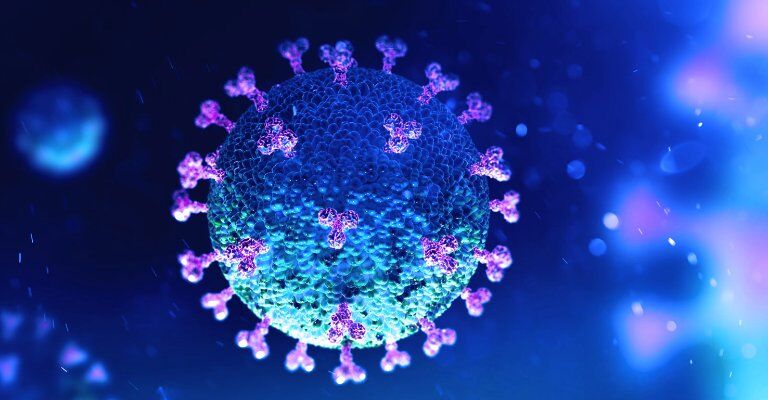Teche Area weekly COVID-19 percent positive test rates rise
Published 4:17 pm Wednesday, December 9, 2020

- Teal COVID graphic
On Wednesday, the Louisiana Department of Health update showed the state adding 4,339 new COVID-19 cases since Tuesday’s update — the highest single-day increase in cases without a backlog since LDH began reporting statistics in March.
It also showed the seven-day average of test positivity rates across the Teche Area and Acadiana continued to rise, with only St. Martin Parish showing a minor (4.4 percent) decrease as of Dec. 2.
Even with the decrease, St. Martin was still at 12.9 percent positivity, well above the state’s baseline target of five percent.
The LDH dashboard showed Louisiana added 41,054 new tests Wednesday. That raised the total identified infections so far in the state to 258,914. Of those, 241,348 are confirmed, with 17,566 listed as possible cases.
According to an LDH spokesman, people initially identified as having a positive antigen test who are later identified as having a positive confirmatory test will be removed from the possible case count and added to the cumulative case count.
The rough positivity rate for Wednesday’s tests is 10.6 percent, up 3 percent from Tuesday’s 7.6 percent.
According to the update, the number of deaths attributed to COVID-19 rose to 6,684, an increase of 32 from 6,652 on Tuesday. Of those, 6,393 are confirmed, with 291 considered probable COVID-19 fatalities pending final testing.
That rise represents an increase of 0.48 percent. The average age of fatal patients is 73, the median age 75.
In Iberia Parish, the number of cases was at 4,043 Wednesday, an increase of 43. Of those, 3,868 are confirmed, with 175 probable. The number of deaths remained at 110, 107 confirmed and three probable. There have been 47,836 tests performed in the parish. The seven-day average test positivity rose by 21 percent, from 10.5 percent on Nov. 25 to 12.7 percent on Dec. 2.
St. Martin Parish’s number of identified cases rose to 3,084, an increase of 123, with 39,542 tests performed. The seven-day average test positivity rate dropped by 4.4 percent, from 13.5 percent on Nov. 25 to 12.9 percent on Dec. 2. The number of deaths remained at 75, with 70 confirmed and five probable.
In St. Mary Parish, the seven-day positivity rate rose on Dec. 2 to 6.5 percent, from 5.9 percent on Nov. 25. Total cases rose to 2,518, an increase of three, after 30,168 tests. Of those cases, 2,385 are confirmed, with 133 probable. The number of COVID-19 deaths remained at 97, with 91 confirmed and six probable.
In Lafayette Parish, the Wednesday case count rose by 330, to 13,555, with the number of tests rising to 197,006. The seven-day test positivity average rose from 10.9 percent on Nov. 25 to 13 percent as of Dec. 2. The number of deaths rose by one, to 164, with 159 confirmed and five probable.
The number of cases in Jefferson Parish rose by 451, to 25,767 on Wednesday, compared to an increase of 180, to 17,374 in Orleans Parish. The latest data shows Orleans administered more tests, with 470,905 in Orleans compared to 353,547 tests in Jefferson.
Jefferson Parish surpassed the confirmed COVID-19 death toll in Orleans Parish on Wednesday. Orleans Parish deaths rose by one, to 652, with 612 confirmed and 40 probable. In Jefferson Parish, the total number of deaths rose by six, to 639, with 614 confirmed and 25 probable.
The LDH reporting on hospitalizations due to coronavirus infections showed 1,537 hospitalizations on Tuesday, an increase of 21 from 1,516 on Monday. The number of patients on ventilators rose by 12, to 177.
The number of COVID-19 hospitalizations in Region 4, which covers Acadiana, rose by five to 223 on Tuesday, up from 218 on Monday. The number of patients on ventilators Monday dropped by two, to 32.
Overall hospital bed occupancy in Region 4 was at 80.9 percent, up 3.5 percent, with 1,269 of the region’s beds occupied and 300 available. The total number of reported beds was at 1,569.
Overall intensive care unit occupancy across Acadiana rose, but remained below 90 percent Tuesday, with 139 of 157 beds occupied, or 88.5 percent.
The overall occupancy percentages are based on all cases, not just COVID-19 cases, and includes not only the physical bed and space but also the staff required to issue care. The burden of additional patient load affects the ability of hospitals to serve all patients, especially in critical care situations.
Broken down by age group, the number of cases statewide in the 18 to 29 demographic was at 56,213 Wednesday. It is the demographic group with the largest number of identified cases by far. The number of deaths reported in the group was 26.
The number of COVID-19 cases identified in the 30 to 39 age group was at 41,340, with 93 deaths, followed closely by the 40 to 49 age group, with 37,822 cases and 211 deaths, and the 50 to 59 age range with 37,204 cases, including 563 fatalities reported.
In the 60 to 69 age group, there were 29,303 cases reported and 1,210 deaths. This age group has the second-highest number of deaths, behind only the 70 and above demographic group.
The 70 and above group case count was at 28,225. The number of deaths in that group rose to 4,574 — still the largest number of fatalities for any age group by far, more than the number of deaths in all other groups combined and more than two-thirds of the total COVID-19 attributed deaths in the state.
The under 18 group, the smallest demographic segment, had 28,535 cases total — 5,258 age 4 and under — and seven reported deaths.
The state’s seven-day average of tests given as of Dec. 2 was 238.2 tests per 10,000 residents, down from 343.2 on Nov. 25. The positivity rate among those tests rose to 10.7 percent, up 2.9 percent from 7.8 percent on Nov. 25. The last time the state’s seven-day average was that high was on July 29, when it was at 12 percent.
In Region 4, the Dec. 2 numbers continued to trend worse than the state average. Although the testing rate in the region dropped to a point better than the state overall, at 251.1 tests per 10,000 residents, the seven-day average percent positive of those tests was well above the state average at 12.5 percent, up 1.8 percent from 10.7 percent on Nov. 25. The last time the region had a weekly positivity rate that high was on Aug. 5, when it was at 12.9 percent.
According to Wednesday’s update, labs in Louisiana have processed at least 3,801,983 COVID-19 tests so far.
By gender, the state’s weekly report shows women making up the largest part — 55 percent — of the identified COVID-19 cases in the state, with men comprising 44 percent and 1 percent unknown. On the other hand, the COVID-19 deaths are predominantly among men, 52.2 percent to 47.8 percent for women.
The number of presumed recovered cases, as of Dec. 7, rose to 217,930. In order to be considered recovered, a living patient must either be out of the hospital and 14 days past a positive test result, or 21 days past a positive test date if their hospitalization status is unknown.
On Dec. 9, the weekly update of fatalities by race showed the percentage of COVID-19 deaths among White victims continued to climb. Initially, LDH reported that 70 percent of all COVID-19 deaths in the state were in the Black community. That number has since dropped to 42.74 percent as of Dec. 2, while White victims now make up 55.83 percent of all fatal cases.
The Native American/Alaskan Native total was at 0.11 percent. Native Hawaiian/Pacific Islander data remained at 0.08 percent. Other races identified include Asian at 0.68 percent, Unknown at 0.12 percent and Other at 0.41 percent.
That data is only reported once a week, updated on Wednesday.
The top three underlying conditions among COVID-19 deaths in the latest report were hypertension (63.01 percent), diabetes (37.68 percent), and neurological disorders (27.35 percent).
Other factors included cardiac disease (26.26 percent), chronic kidney disease (22.13 percent), obesity (20.69 percent), congestive heart failure (16.42 percent), pulmonary issues (14.58 percent), cancer (8.53 percent), and asthma (4.18 percent). Only 4.3 percent of all patients had no underlying conditions.




